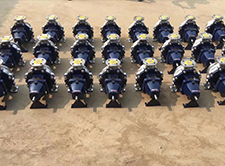Japanese
- Afrikaans
- Albanian
- Amharic
- Arabic
- Armenian
- Azerbaijani
- Basque
- Belarusian
- Bengali
- Bosnian
- Bulgarian
- Catalan
- Cebuano
- Corsican
- Croatian
- Czech
- Danish
- Dutch
- English
- Esperanto
- Estonian
- Finnish
- French
- Frisian
- Galician
- Georgian
- German
- Greek
- Gujarati
- Haitian Creole
- hausa
- hawaiian
- Hebrew
- Hindi
- Miao
- Hungarian
- Icelandic
- igbo
- Indonesian
- irish
- Italian
- Japanese
- Javanese
- Kannada
- kazakh
- Khmer
- Rwandese
- Korean
- Kurdish
- Kyrgyz
- Lao
- Latin
- Latvian
- Lithuanian
- Luxembourgish
- Macedonian
- Malgashi
- Malay
- Malayalam
- Maltese
- Maori
- Marathi
- Mongolian
- Myanmar
- Nepali
- Norwegian
- Norwegian
- Occitan
- Pashto
- Persian
- Polish
- Portuguese
- Punjabi
- Romanian
- Russian
- Samoan
- Scottish Gaelic
- Serbian
- Sesotho
- Shona
- Sindhi
- Sinhala
- Slovak
- Slovenian
- Somali
- Spanish
- Sundanese
- Swahili
- Swedish
- Tagalog
- Tajik
- Tamil
- Tatar
- Telugu
- Thai
- Turkish
- Turkmen
- Ukrainian
- Urdu
- Uighur
- Uzbek
- Vietnamese
- Welsh
- Bantu
- Yiddish
- Yoruba
- Zulu
Telephone: +86 13120555503
Email: frank@cypump.com
9月 . 13, 2024 22:13 Back to list
slurry pump bearing assembly
Understanding the Slurry Pump Bearing Assembly
Slurry pumps play a crucial role in various industries, particularly in mining, mineral processing, and wastewater management. One of the most vital components of a slurry pump is the bearing assembly, which supports the rotating shaft and ensures the smooth operation of the pump. This article delves into the essential aspects of slurry pump bearing assemblies, their importance, and maintenance considerations.
What is a Slurry Pump Bearing Assembly?
A slurry pump bearing assembly is a critical component that comprises various elements designed to support and stabilize the pump shaft. It typically includes bearings, housings, seals, and lubrication systems. The primary function of the bearing assembly is to facilitate the rotation of the shaft with minimal friction while ensuring that the operational stresses do not damage the pump.
The design of the bearing assembly varies based on the type and application of the slurry pump. Some common types of bearings used in these assemblies include sleeve bearings, roller bearings, and ball bearings. Each type has its benefits and specific use cases, depending on factors like load, speed, and fluid characteristics.
Importance of Bearing Assembly in Slurry Pumps
The bearing assembly is crucial for several reasons
1. Support and Stability The assembly provides rigid support for the shaft, allowing it to rotate efficiently even under the heavy loads associated with conveying slurries, which often contain solid particles.
3. Heat Management Slurry pumps handle fluids that can generate heat due to friction and turbulence. The bearing assembly helps manage this heat, preventing overheating and potential failure.
slurry pump bearing assembly

4. Sealing and Protection Bearing assemblies often include seals that protect the internal components from the abrasive nature of slurries, preventing contamination and damage to the bearings.
Maintenance Considerations
To ensure the longevity and efficiency of a slurry pump bearing assembly, regular maintenance is crucial. Here are key maintenance practices
1. Regular Inspection Routine inspections can help identify signs of wear, misalignment, or overheating. Early detection of these issues can prevent significant failures and costly downtime.
2. Proper Lubrication Maintaining appropriate lubrication levels is essential for reducing friction and ensuring smooth operation. Depending on the design, different lubricants may be required, such as grease or oil.
3. Seal Replacement As seals wear out, they can allow abrasive materials to enter the bearing assembly. Regularly replacing seals can protect the internals of the pump and prolong its life.
4. Monitoring Operating Conditions Keeping an eye on operating conditions, such as temperature and vibration levels, can provide valuable insights into the health of the bearing assembly.
Conclusion
In conclusion, the slurry pump bearing assembly is a fundamental component that significantly influences the overall performance and lifespan of the pump. Understanding its importance and maintaining it effectively can lead to improved efficiency and reduced operational costs. As industries continue to rely on slurry pumps for critical applications, prioritizing the health of the bearing assembly will remain essential to ensure optimal performance.
-
AI-Optimized Pipeline Pumps | Boost Efficiency
NewsAug.05,2025
-
Reliable Non-Clog Sewage Pumps with GPT-4-Turbo Tech
NewsAug.04,2025
-
High-Performance Air Pumps for Sand & Gravel | Efficient Transport
NewsAug.03,2025
-
ISG Series Vertical Pipeline Pump - Chi Yuan Pumps Co., LTD.|Energy Efficiency, Corrosion Resistance
NewsAug.03,2025
-
ISG Series Pipeline Pump - Chi Yuan Pumps | Energy Efficiency&Compact Design
NewsAug.03,2025
-
ISG Series Vertical Pipeline Pump - Chi Yuan Pumps Co., LTD.|High Efficiency, Low Noise, Durable
NewsAug.02,2025










